Don't wanna be here? Send us removal request.
Text
The 12 Houses Visualized
What mental visuals do you get while imagining the 12 astrological houses? These are mine:
1st - a mirror, a pair of hands from a first person perspective
2nd - piles of gold and silver jewelry, a victorian mansion, a fur coat, an abundant backyard orchard ready to be harvested, getting your nails done at the most expensive salon you could find, a spa day, a limousine, the titanic (prior to sinking lol)
3rd - a library, a slam poetry reading, a facebook argument, a high school debate club, a children’s book filled with random trivia and facts, a dictionary, a typewriter, an indie record store
4th - a church congregation, a kind old lady’s doll collection, the smell of your mother’s perfume on a jacket of hers you’re borrowing, a bed made up and ready to sleep on, a relative’s house over christmas packed with your family and filled with the aroma of fresh baked cookies
5th - a nightclub, a hot summer day spent in the pool with your friends and family, a teenage girl’s room full of band posters and jewelry and makeup, playing with sparklers in pitch darkness, an amusement park ride
6th - a dairy farm, the bustling frantic kitchen of a busy restaurant, a veterinarian’s office, the waiting room for a doctors office, a freshly done load of laundry sitting in a basket waiting to be folded
7th - a wedding ring being placed on a finger, a fancy brunch with potential business partners, a track runner handing off a baton to the next runner, a shy high school couple holding hands, a courthouse
8th - a frozen lifeless tundra, a cemetery, a swamp, an antique shop, a crematorium, a charnel ground while a sky funeral takes place, a decaying carcass in the woods being enjoyed by scavengers, an interrogation room, moss and mushrooms, children playing with a ouija board
9th - a professor in the middle of a lecture, ships and boats, the view from the top of mount everest, a monastery, the sistine chapel, the view from out of an airplane window, a graduation ceremony
10th - skyscrapers, a ceo’s office, minimalist decor, a busy call center full of cubicles, a fancy invitation to a company party, a suit and tie, the smell of printer paper, the white house
11th - a roaring crowd of revolutionaries, a shooting star, a nuclear weapon detonating, a prospering commune, a virtual reality chatroom, a cult chanting and wailing in unison, the chat on a twitch livestream absolutely blowing up, a community rebuilding their town together after a natural disaster
12th - the bottom of the ocean, the northern lights, a clear view of the milky way galaxy on a cold winter’s night, an empty hospital, an abandoned house nearly taken over by nature, a very dusty and quiet old folks home, a bubble bath, a holding cell
136 notes
·
View notes
Text
How to Take Notes for Chart Synthesis
Here is a blank template you can use to fill out and to figure out what attributes of a chart are the most prominent, to help you get an idea of how to read a chart from a more “big-picture” perspective.
I had uploaded this previously, though there were some major formatting errors from trying to post it on mobile, so here it finally is looking the way it should!
I’ll later upload an example using my own chart with this template, and show you my resulting notes, so you can have an example to help you understand how to use this. Stay tuned for that.
You will need:
A chart image generated with your accurate time, date, and location of birth, which includes aspects or an aspect table.
A printer, word processor, notebook, or something else to fill out the tables below
Necessary vocab: Aspect: The angle created between two planets placed on a chart Nadir: The angle opposite of the Midheaven; often also called the IC Descendant: The angle opposite the Ascendant Orb: How close an aspect is; the number of degrees away from being an exact aspect Stationary: A planet in your chart that was not moving forward or backward; it’s paused in its orbit Retrograde: When a planet moves backwards in its orbit Mutual reception: When two planets are in each other’s signs of rulership; there can also be a mutual reception by house Aspect configurations: A shape formed by several planetary aspects in a chart. For example, one of the most common aspect patterns is called a T-square, in which two planets forming a square to a third are also joined to one another by an opposition. Some others include the grand trine, grand cross, yod, mystic rectangle, etc
SCORING Sun/Moon: 2 points each. Everything else: 1 point each. This totals 14 possible points.

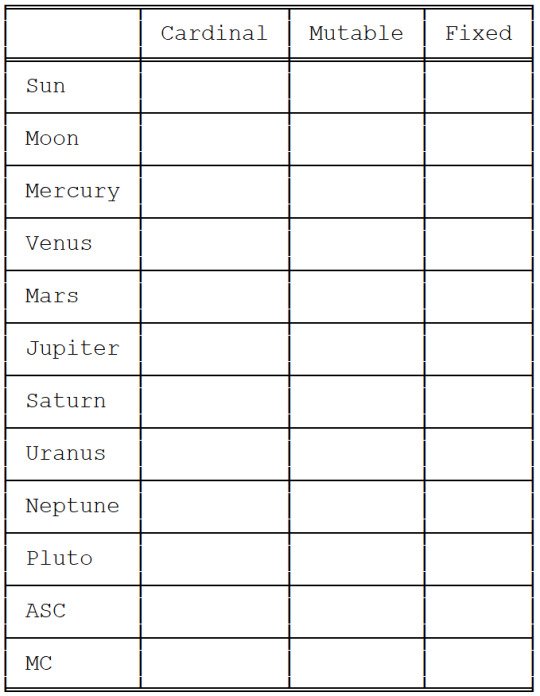
A. THE CHART AS A WHOLE 1. PREDOMINANT ELEMENT How many? Take note if more than 5/14. 2. WEAKEST ELEMENT How many? Take note if 0/14. 3. PREDOMINANT MODE How many? Take note if more than 6/14. 4. WEAKEST MODE How many? Take note if 0, 1/14 or 2/14. 5. PLANETARY PATTERN Take note if pattern is clearly defined. 6. ASPECT CONFIGURATIONS Take note of answer. 7. SUN/MOON SIGNS & RELATIONSHIP Note aspect or phase. Take note if in major aspect. 8. ASCENDANT/MIDHEAVEN SIGNS 9. NUMBER OF RETROGRADE PLANETS Take note if 0 or more than 3. B. DETERMINING PLANETARY STRENGTH 1. SUN SIGN & HOUSE 2. MOON SIGN & HOUSE 3. SUN RULER: ITS SIGN & HOUSE 4. ASCENDANT RULER: ITS SIGN & HOUSE 5. PLANET IN OWN SIGN Take note of answer. 6. PLANET IN OWN HOUSE Take note of answer. 7. PLANET RISING Take note if less than 2 degrees above or 6 degrees below ascendant. 8. PLANET ON MIDHEAVEN Take note if less than 2 degrees before or 6 degrees after midheaven. 9. PLANET ON NADIR Take note if less than 1 degree before or 2 degrees after nadir. 10. PLANET DESCENDING Take note if less than 1 degree before or 2 degrees after descendant. 11. STATIONARY PLANET Take note of answer. 12. SOLE DISPOSITOR 13. MOST ASPECTED PLANET How many aspects? 14. UNASPECTED PLANETS Take note of answer. 15. OTHER FOCAL PLANETS Take note of answer. C. ASPECTS & OTHER CHART VARIABLES 1. PREDOMINANT TYPE OF ASPECT How many? 2. ABSENCE OF A TYPE OF ASPECT 3. CONJUNCTIONS WITHIN 3 DEGREES Indicate orb. Take note if less than 1 degree. 4. OTHER MAJOR ASPECTS WITHIN 3 DEGREES Indicate orb. Take note if less than 1 degree. 5. IMPORTANT MINOR ASPECTS Note those which are exact. 6. MUTUAL RECEPTIONS Take note of answer. 7. LUNAR NODES Indicate sign & house. Take note of answer. List major aspects within 2 degrees. D. PRELIMINARY SYNTHESIS 1. STRONGEST PLANETS How many counts? Count the number of times you have listed a planet in the sections above. If you have taken separate note of a planet, count it double. 2. STRONGEST SIGNS How many counts? Take note if more than 4. 3. STRONGEST HOUSES How many counts? Take note if more than 4. 4. STRONGEST ASPECT Take note if less than 30 minutes. E. ADDITIONAL CONSIDERATIONS
37 notes
·
View notes
Text
If you're on mobile, check out my carrd for more links and info.
0 notes
Text
Chart Generation Websites & What They’re Best For
astro-charts
Good for beginners and intermediates, gives you some insight on the shape of your chart and other defining features. Does not offer a free interpretation.
astro.com
Ol’ reliable. Produces a high-resolution chart image with no interpretation. Good for intermediate to advanced astrologers.
astro-seek
Gives a brief interpretation, shows you your chart shape and planetary dominants. All-around great resource for students of all levels.
astrowin
Gives a fairly extensive interpretation, with a built-in personal database to store all of your birth info for charts. Offers synastry interpretations and scores as well. Best for beginners.
vedic-horo
My preferred chart generation site for Vedic charts. Does not offer an interpretation. Allows you to select from a number of different types of charts. Best for intermediate to advanced students.
59 notes
·
View notes
Text
I have enabled submissions -- feel free to submit your own articles, resources, and so on!
Hello there!
I’m a “new” astrology blog aimed at archiving the best educational astrology posts, articles, references, and resources. I eventually intend to add a series of organized lessons here for new astrologers to start off with. I kind of want this to be a one-stop astrology information database, or wiki-like sort of thing.
I was formerly the creator/main admin of sagittariuswithablog.
Feel free to message me with any questions. This is all still obviously a work in progress!
Also feel free to message me with any suggestions for topics/articles/resources/etc. :)
3 notes
·
View notes
Text
Basic Aspects- Astrology Notes #23
We’re moving onto aspects now, and I’ll expand on everything I’ve covered in previous notes later on.
To start with aspects, first check if the aspect is applying or separating.
Applying aspects represent what you believe you can do (control and opportunity), and separating aspects represent what you believe has been done to you, around you, or beyond you (coping, learning, overcoming, adapting).
And I can’t stress this enough, planetary conditions matter a lot here. The planet involved with the other (i.e. Jupiter opposition Saturn, or Venus opposition Mercury) matter so much. Whichever planet comes first is the energy that’s helping, hurting, or blending with the other placement’s energy.
Benefic Aspects
Conjunction- Two planets in the same sign. Powerful alliance, the energy is working together. However, this can create a *lot* of energy happening in a certain sign, especially if the planet conjunct is a malefic (think Saturn conjunct Jupiter, Saturn is going to restrict the expansion of Jupiter, whereas Jupiter conjunct Saturn is going to “smother” the effects of Saturn a little bit). There can also be “too much” of a good thing, think about how everything is good in moderation here. The energies in a conjunction, especially if a stellium is involved, can blend so hard that they kind of “forget” that they’re distinct and separate. This can create a blind spot and lead to the individual or collective having a hard time seeing the distinction/separate energies of the planets, while others can see it pretty clearly. The energy is very united in a conjunction.
Trine- 120 degrees apart, 4 signs apart, all placements are in the same element. This aspect is one of perfect agreement and friendship between the placements. Jupiter is naturally domicile if a trine is present in the chart. Most beneficial aspect to any chart. There’s a natural harmony here, and the individual or collective may not notice the natural talents the trine offers, which can lead to those natural talents not being developed because the talents seem natural and like second nature. Paying attention to this natural talent (whatever this trine offers depending on the blend of energies) can lead to accepting ourselves, others, situations, and gives an individual or the collective the highest state of synchronicity. This can be a huge blast of the same kind of energy, once again the possibility for too much of a good thing, but in an elemental sense rather than a specific sign like the conjunction- this energy needs to be directed at something. If the trine is in a natal chart and the person isn’t aware of what the energy is doing, this can lead to a kind of “lopsided” individual that focuses too much on one thing, or it can make them lazy because they don’t feel the need to develop that talent. Relying too heavily on a trine without developing the natural gifts given from that aspect can lead to issues. Trines need to be managed, and can create profound effects on an individual or the collective if managed and developed properly.
Sextile- 60 degrees apart, 2 signs apart. Good aspect but not in complete agreement, Venus is naturally domicile if sextile is present in the chart. Not an extremely strong aspect like the conjunction or trine, but very compatible. Placements involved are yin and yang energy (Earth and Water, Fire and Air). These placements aren’t in conflict, and it’s easy to resolve issues between them if there’s any. Sextile aspects are wonderful for “shaping” and making changes to, there’s a huge potential for intelligent use of the energies- the energy is capable of being directed. Sextiles are usually noticed in an individual’s birth chart or by the collective, so the talents that come from a sextile are more easily noticed and appreciated.
Semi-sextile- 30 degrees apart, signs are next to each other. Semi-sextile aren’t inherently good, depends on planetary Lords and signs in the semi-sextile aspect (i.e. Aries Sun semi-sextile Scorpio Mars, Aries being exalted in the Sun and Scorpio being domicile in Mars could make a very passionate, strong individual or a very impulsive, vengeful individual). Look to the planets and signs involved, the planetary condition and planets involved are really important here. Semi-sextile aspects are a kind of aggregative energy, there’s friction between the two because the signs don’t really have anything in common. Think sextile but more malleable and easier to flip to “good” or “bad”. Super malleable energy.
Malefic Aspects
Opposition- 180 degrees apart, 6 signs apart. Considered the worst agreement and most malefic energy in a chart. Saturn is in natural domicile if opposition is present in the chart. There’s massive polarity and polarity happening between these two placements. Opposition marks discontent, insecurity, and a wavering attitude if present in a chart. The individual or collective may seek out people/ situations/environments to mirror their internal struggles in order to learn more about themselves through observing and interacting with these people/situations/environments. Oppositions may lead to swinging from one side to another and create a feeling of being internally torn between two things. The key here is learning how to see the grey area- learning how to interact with that grey area instead of everything being so black and white between the energy of the two placements. Negotiation has to be learned and the tension has to be worked with to bring the two opposites together. There’s a need for balance, compromise, and introspection in an opposition.
Square- 90 degrees apart, 3 signs apart. Moderately the lesser of the two malefics, opposition being the least agreement between two aspects. Mars is naturally domicile if square is present in the chart. There’s tension between the placements, but not an overwhelming amount. The placements share the same triplicity (cardinal, fixed, mutable) and can show conflicting parts of self or conflicting parts of the collective. These parts of self can be solved with introspection, squares don’t require as much work as an opposition does. Squares also show where there’s a struggle for balance. Squares are more difficult when you’re younger because as you mature and work on yourself, the more the square becomes naturally evolved- this applies to the collective too. If a placement is squaring for a long period of time, it’ll help the collective become more evolved before the transit is finished. Squares help us stop being complacent, but we have to do things right when evolving this placement.
Semi-square- 45 degrees apart. Not inherently bad, depends on planetary Lords and signs in the semi-square aspect (i.e. Taurus Moon semi-square Mercury Pisces, Taurus is exalted in the moon whereas Pisces is in detriment in Mercury, the individual’s emotions may clash with the way they communicate or take in information). Think of the square’s energy but less conflicting. This energy is also very malleable, as any “semi” aspect is. There will be natural friction here, but it won’t be as strong. The friction can be pretty easily dealt with through some introspection and internal work.
Neutral
Quincunxes- 150 degrees apart, 5 signs apart. Connections to the idea of fate or destiny are present here. The signs don’t really have anything in common and adjustments must be made for them to work together in agreement. The placements have different missions, serving different agendas at the same time, and the energy can be merged if the effort is put in to get them to work together. If a quincunx is in the natal chart, it may mean that an individual’s fate and natural personality don’t line up (especially if the Vertex, Chiron, Midheaven, Part of Fortune, Sun, Ascendant, Moon are involved).
#astrology#aspects#natal chart#birth chart#conjunction#trine#opposition#sextile#square#quincunx#learn astrology
115 notes
·
View notes
Conversation
Planetary Dominance
Sun Dominant Chart (Leo/Aries): Full of vitality, free spirited, Playful, Childlike, Expressive, Creative, Sparkling, Imaginative, Active, Enthusiastic, Ego Centric, Vivacious
Moon Dominant Chart (Cancer/Taurus): Intuitive, Fantastical, Maternal, Nurturing, Comforting, Concerned, Receptive, Responsive, Protective, Withdrawing, Sentimental, Emotional
Mercury Dominant Chart (Gemini/Virgo): Witty, Clever, Intellectual, Cerebral, Curious, Scholarly, Knowledgeable, Articulate, Prolific, Childlike, Inquisitive, Questioning, Fluid
Venus Dominant Chart (Libra/Taurus/Pisces): Amiable, Pleasure Seeking, Pleasant, Stylish, Gracious, Fashionable, Agreeable, Enchanting, Considerate, Harmonizing, Elegant, Charming
Mars Dominant Chart (Aries/Scorpio/Capricorn): Passionate, Energetic, Enthusiastic, Pioneering, Volatile, Warm, Spirited, Sprightly, Dynamic, Antagonistic, Assertive, Fearless, Independent
Jupiter Dominant Chart (Pisces/Sagittarius): Curious, Generous, Fun Loving, Free, Philosophizing, Academic, Pilgrim, Studious, Broad Minded, Intrigued, Liberal, Progressive, Playful, Excessive
Saturn Dominant Chart (Capricorn/Libra): Profound, Wise, Pragmatic, Thoughtful, Enterprising, Ambitious, Sensitive, Committed, Self Demanding, Purposeful, Self Deprecating, Inspiring
Uranus Dominant Chart (Aquarius): Shocking, Revolutionary, Unifying, Surprising, Inventive, Innovative, Antagonistic, Radical, Reforming, Creative, Original, Fresh, Unusual, Jolting
Neptune Dominant Chart (Pisces): Dissociate, Transporting, Bewitching, Impressionable, Susceptible, Perceptive, Healing, Curative, Idealistic, Creative, Visionary
Pluto Dominant Chart (Scorpio): Transformative, Powerful, Esoteric, Healing, Regenerative, Therapeutic, Divine, Perceptive, Insightful, Penetrative, Sanctified, Devoted, Passionate
#astrology#birth chart#natal chart#planets#venus dominant#mercury dominant#mars dominant#jupiter dominant#pluto dominant#neptune dominant#sun dominant#moon dominant#uranus dominant#dominant planets#keywords
15K notes
·
View notes
Quote
The ELEMENTS are the energy substance of experience. The SIGNS are the primary energy patterns and indicate specific qualities of experience. The PLANETS regulate energy flow and represent the dimensions of experience. The HOUSES represent the fields of experience wherein specific energies will be most easily expressed and most directly encountered. The ASPECTS reveal the dynamism and intensity of experience as well as how the energies within the individual interact.
Stephen Arroyo, Chart Interpretation Handbook (pg. 27)
273 notes
·
View notes
Text
I put these into an easy-to-fill-out/print worksheet format here.
How strong are your natal planets?
I found these really great posts on a WordPress blog, and I thought I’d share them here:
How Strong is your Sun? Here’s the Score!
How Strong is Your Moon? Here’s the Score!
How Strong is Your Mercury? Here’s the Score!
How Strong is Your Venus? Here’s the Score!
How Strong is your Mars? Here’s the Score!
How Strong is your Jupiter? Here’s the Score!
How Strong is Your Saturn? Here’s the Score!
How Strong is Your Uranus? Here’s the Score!
How Strong is Your Neptune? Here’s the Score!
How Strong is Your Pluto? Here’s the Score!
How Strong is Your Chiron? Here’s the Score!
#astrology#natal chart#birth chart#stellium#conjunction#dominant element#quiz#test#zodiac#cardinal#fixed#mutable
23 notes
·
View notes
Text
sagittariuswithablog:
If any of you are interested in moon phases, here’s some pretty cool articles:
The New Moon
The Crescent Moon
The First Quarter Moon
The Gibbous Moon
The Full Moon
The Disseminating Moon
The Last Quarter Moon
The Balsamic Moon
You can calculate the moon phase for any given date and time here.
Here is more about how the phase you were born under affects your personality.
11 notes
·
View notes
Text
Conjunctions of the Chart Ruler to other planets and their influences
Source
The chart ruler is the ruler of the sign on the ascendant.
In cases where there is a sign intercepted in the first house, or a sign such as Scorpio, which is ruled by both Pluto (its main ruler) and co-ruler Mars, and any planets in the first house, these are co-rulers.
The main and foremost chart ruler is the planet that is the primary ruler of the sign on the ascendant and this planet represents you.
The chart ruler is the most important planet and is secondary to none.
~*~
Conjunctions of the Chart Ruler/s to other planets and heir influences:
Chart Ruler/s in conjunction with the Sun This aspect gives good health, physical strength, energy, and vitality. This is usually a fortunate placement, tending toward a long life and physical strength even in old age. The recuperative powers are very strong. Depending on the sign, this placement gives an optimistic disposition and offsets aspects of low self-esteem. The chart ruler in conjunction to the Sun helps to offset negative aspects. This placement also gives a sense of charisma and makes one well liked by others. The affairs of the house with Leo on the cusp are likely to be of importance and focus in the life.
Chart Ruler/s in conjunction with the Moon The nature here is family oriented, sensitive, and emotional. These people often are fond of food and good cooks. They can have a nurturing aspect to the personalities and are caring and protective towards others. There is often pronounced psychic ability, with a tendency to absorb the feelings, emotions, and general tone of the environment around them. These people are moody and are often fond of places near water. They are maternal. Home and family are very important to them. Often there is a tendency for changes in the area of having different identities, aliases, and in going through phases in their lives. In some cases, they may change color of their hair and their style of dress quite often. The affairs of the house with Cancer on the cusp are likely to be of importance and focus in the life.
Chart Ruler/s in conjunction with Mercury These people are often intellectual, talkative and have good dexterity and physical coordination. They have active minds and can get bored easily. They are often fidgety and restless. This placement often gives a talent for athletics. The affairs of the house with Gemini on the cusp are likely to be of importance and focus in the life.
Chart Ruler/s in conjunction with Venus This aspect usually makes one attractive, charming, gives beauty, artistic talent and a sense of good taste. These people have charisma, along with a pleasing personality and unless Mars is strong in the chart, they are usually refined and well mannered, with a strong dislike of coarseness or crude behavior from others. They dislike confrontations and prefer a harmonious and peaceful environment and relations with others. The affairs of the houses with Taurus and Libra on the cusps are likely to be of importance and focus in the life.
Chart Ruler/s in conjunction with Mars This aspect makes for an outgoing, hot headed, energetic, and combative nature. It is good for heath, energy, and vitality, but can make one rude, crude, coarse, and ill mannered. These people are generally impatient and like to get straight too the point. Details bore them. Mars in conjunction with the ruler gives competitiveness, athletic and martial ability, along with a fearless pioneering spirit. People with this placement are often born leaders. Many military leaders such as officers, generals and those who have important and lifelong careers in the military have this conjunction. The affairs of the house with Aries on the cusp are likely to be of importance and focus in the life.
Chart Ruler/s in conjunction with Jupiter Jupiter gives protection throughout the life. This aspect gives self-confidence, a cheerful nature, and optimism, and can offset negative factors such as low self-esteem in a chart. In some cases, they are life long students and many benefits can come from involvement with universities and other places of education. They can be overindulgent and fond of travel. This gives the personality a pleasant disposition and they are generally well liked by others. There is also a tendency to be large in some way, either large boned, tall or heavy. The affairs of the house with Sagittarius on the cusp are likely to be of importance and focus in the life.
Chart Ruler/s in conjunction with Saturn The tighter the conjunction, the more malefic the influence can be. There is often an inhibited personality, along with pessimism, in some cases hard luck, and an overly serious nature. Other aspects need to be taken into consideration. The affairs of the house with Capricorn on the cusp are likely to be of importance and focus in the life. One tragic example I noted was a child named Lisa. Her mother put her up for adoption in infancy. She was adopted by attorney Joel Steinberg and his wife through shady means. Lisa endured six horrific years of extreme abuse at the hands of this couple, which ended when Joel Steinberg beat her to death. Her chart ruler, the Moon was in near exact conjunction with Saturn in Libra in her fourth house of home and family. Saturn in Libra is exalted and much more powerful in its influence in that sign, intensifying its malefic nature. She never even had a chance.
Chart Ruler/s in conjunction with Uranus These people are often rebellious, freedom loving, original, unusual, and can even be eccentric. This aspect can give genius, a talent for electronics, invention, and an aptitude for mathematics. Nervous outbursts are common, along with a high-strung nature. People with this placement are likely to be very unusual and/or exceptional in some way. The affairs of the house with Aquarius on the cusp are likely to be of importance and focus in the life.
Chart Ruler/s in conjunction with Neptune Neptune can have a malefic when conjunct a ruling planet. It is often found in charts of the mentally ill, those who are drug and/or alcohol addicted, those who are aberrant, weak willed, abnormally sensitive, and unreliable. These people are often impressionable and open to being deceived and taken advantage of by others. It is not good for the mental health. [Only with the conjunction does the aforementioned apply] On the upside, the chart ruler conjunct Neptune is found in the charts of many famous composers and musicians. Neptune is the higher octave of Venus in the ability to create beauty. Poets, artists, and dancers often have this conjunction. The affairs of the house with Pisces on the cusp are likely to be of importance and focus in the life.
Chart Ruler/s in conjunction with Pluto Conjunctions with Pluto give intensity. There is ability and aptitude for magickal practice, intense concentration, and focus of the mind. This aspect gives a strong will, inner strength, and a do or die attitude. Death before dishonor characterizes these people; it is “all or nothing.” This aspect is frequently seen in the charts of those who are born sorcerers. These people tend to transform those that they come into contact and interact with.
15 notes
·
View notes
Text
Retrograde Planets
(Source: Tracy Mark’s “The Art of Chart Interpretation”)
Retrograde planets are functions of the personality which operate in an inward, indirect, subconscious, and delayed manner. They generally indicate energies which we were not encouraged to express outwardly when we were young, and which, as a result, we must develop for ourselves, in our own way and in our own time. Most people have two or three retrograde planets; zero, one or four retrogrades is unusual but not extraordinary. People who have no retrogrades develop most of the important life skills at an early age and rarely need to explore their own psychological process until one of their planets turns retrograde by progression. People with four or more retrograde planets usually feel alienated from society and struggle more than most people to find their “niche” in the world. Turning inward when very young, they experience a need to define for themselves their own unique value system, philosophy or aim in life. Complex, reflective and individualistic, these people usually have to set their own standards and forge their own paths, even if doing so means eccentricity or isolation. Regression, inhibition and withdrawal may characterize retrograde planets, but they also have considerable constructive potential in regard to self-understanding, self-directed activity and openness to unconscious and superconscious energies. Students familiar with secondary progressions should note whether retrograde planets in the natal chart have turned direct by progression, or direct planets have turned retrograde, because such changes will have a significant impact upon the personality.
Keywords for each of the retrograde planets are as follows:
MERCURY RETROGRADE:
contemplative, inner-directed mind
self-analytical and self-critical
awareness of psychological subtleties
absentminded, not attuned to external details
literary interests or abilities
learns through absorption
self-conscious speech or communication
enjoys own company, not inclined toward small talk or casual interactions
difficulty translating perceptions into words and making contact
feels misunderstood or disconnected from others
VENUS RETROGRADE:
develops own unique social and aesthetic values
undemonstrative, difficulty communicating affection
self-loving, narcissistic
fearful of intimacy and love
seeking the perfect love, unrealistic ideals
continually developing own value system
ill at ease socially, reclusive, unwilling to play social games
aesthetic sensitivity and talent
nonmaterialistic
tends to form unconventional relationships
MARS RETROGRADE:
inhibited action, lack of outer initiative
noncompetitive, competing only with self
explorer of the psyche, internally directed
solitary or unconventional action
repressed or explosive anger, passive-aggressive
self-destructive, continually battling self
tends to invite aggression
doubts own capabilities, fears risk-taking
alternately self-driving and lethargic
sexual inhibitions or compulsions
JUPITER RETROGRADE:
highly philosophical and meditative
psychologically attuned and insightful
outwardly withholding but inwardly expansive
attuned to inner meanings and purpose, self-guiding
nonmaterialistic, seeks inner wealth
develops own attitudes and belief systems
alternately overly optimistic or pessimistic
socially reclusive, prefers ones own company
rejects conventional and parental belief systems
SATURN RETROGRADE:
inner stamina and endurance
resistance to personal change, rigidity
overly self-controlled and self-denying
demanding of self, repeatedly tests and “beats” oneself
self-doubting and self-critical, feels inferior
inclined to negativity or depression
unambitious, doubts own capacity for success, fearful
prefers to work alone, solitary
considerable self-motivation and perseverance
difficulty coping with authority, weak father figure
alternately overly defended or undefended
URANUS RETROGRADE:
outwardly conventional but inwardly unconventional
experiences alienation from society
psychologically minded, progressive thinking
inwardly rebellious, tends to rebel against self
highly developed intuition, original and inventive
capable of following inner direction
needs internal freedom to follow own path
nervous tension, high level of internal excitation
makes unexpected changes for the sake of change
NEPTUNE RETROGRADE:
vivid imagination, creative inclinations
difficulty translating inspiration into action
lives in a dream world, escapist tendencies
self-deceiving, easily lost in inner chaos
capable of devoting self to an ideal
psychically and physically oversensitive
self-sacrificing or martyr-like temperament
needs quiet and meditative retreats
PLUTO RETROGRADE:
suppressed desire and anger, explosive tendencies
alienated, antisocial, misfit tendencies
self-destructive, turns energy inward
easily loses contact with one's own depths
courageous explorer of the psyche
deep psychological insight and perceptiveness
withdrawn, private, reclusive
compulsive or obsessional temperament
capable of powerful, transforming emotional slates
endurance, considerable resourcefulness under stress
self-regenerating
#astrology#birth chart#retrograde#retrograde planets#natal chart#mercury retrograde#venus retrograde#mars retrograde#jupiter retrograde#saturn retrograde#uranus retrograde#neptune retrograde#pluto retrograde#learn astrology
1K notes
·
View notes
Text
sagittariuswithablog:
Balance of Elements in the Birth Chart
WATER
A heavy emphasis of Water element signs in your astrology chart puts you closely in touch with your feelings, and in tune with the nuances and subtleties in your environment that others won’t even notice. You approach life and understand it through your emotions, and you’re really at your best when you “play your hunches.” You don’t intellectualize about things; you respond exactly how you feel. Water sign people are very attuned to their feelings. An intense sensitivity permits you to experience the heights of emotional bliss, but it can also take you to the depth of despair. Close emotional relationships are essential to your well-being and happiness. Romantic, sentimental, and affectionate, there must be a stable and secure bond between you and your partner. When you are happily situated in such a bond, you can be a very nurturing type. You are not one who can subscribe to the code “live and let live.” You communicate best in non-verbal ways; emotionally, psychically, or through forms as art, dance, music, poetry and photography. You’re apt to let the heart rule the head. Highly impractical and impressionable, you sometimes use bad judgment for you are unable to be objective and evaluate situations impersonally. You may change your mind as often as your moods change, but rarely do the facts sway your beliefs.
The absence or limitation of Water signs in your astrology chart suggests that you may have difficulty understanding the deeper meanings of events and circumstances. Indeed, you may be a little lacking in emotional intensity. This is not to say that you have no feelings, but it does mean that your emotions are not easily engaged and they really don’t run deep. You aren’t so apt to form those extremely close friendships and relationships, and you may even feel smothered and threatened by strong emotional demands of others. You recover quickly from emotional bumps and scrapes, never letting your disappointments get you down. Depression is never apt to be a problem. Many of the aspects of not having water signs are positive, but on the negative side, you must guard against becoming rather callous and cold, detached and unfeeling. Intuitive skills are not readily available to those with few planets in Water signs. In your view this does not matter so much, because you don’t trust intuitive knowledge anyway.
AIR
The increase of Air signs in your astrology chart suggest a strong emphasis on thought, ideas and intellectual pursuits of one sort or another. There is a detachment and a sense of objectivity associated with such a heavy influence in the element of Air. Air signs communicate and express ideas with mental agility. Your Air signs may not, however, always get the job done, and you need to be sure ideas are grounded in reality and put to practical use. Often, individuals having a heavy amounts of Air signs become the impractical dreamers, constantly thinking, but not always following through as well as others. While you may ponder and vacillate, you rarely make foolish mistakes. Detached and not overly emotional, you are almost always objective and fair-minded. You are people-oriented, but more inclined toward the group than the individual.
The limited amount of the Air element in your astrology chart suggests a need to learn adaptability and the use of the mental functions in a creative manner. You don’t emphasize mental activity in your daily life. This is not to say that you aren’t intelligent, but just that you don’t place a lot of value on the world of ideas and education’s for education sake. Often, a shortage of Air signs signifies an inability to communicate effectively or clearly; you may be somewhat enigmatic and obscure. Sometimes there is a self-consciousness associated with such circumstances, and you may over-compensate by working hard to improve such inclinations. You probably don’t enjoy learning unless what you’re studying has an immediate and tangible end. A strength of the air-weak chart is generally the enhanced ability to communicate emotionally, physically or psychically. It may be hard for you to stand back, and clearly view an issue in an objective manner. Thus, there is a tendency to have some trouble in the task of planning ahead. You may find yourself wasting a lot of energy on this account. You must make a special effort to communicate clearly and plan very carefully or your advancement will come only through costly trial and error.
EARTH
The heavy concentration of the Earth element in your astrology chart suggests that you are cautious, premeditative, conventional, and dependable. You are the type of person who lives by a practical, common sense code; stable, and concerned with physical well-being rather than spiritual attainment. You are quite responsible, if a bit rigid, methodical and detail-conscious. The term “down to earth” may suit you quite well. It might be said that you are one of those people who is very well adjusted to life on this planet. You are an organizer, a builder, and a hard-worker. The earth sign traits provide you with the skills and attitude necessary to succeed readily in the world of business. So pragmatic, you don’t often gamble or take unnecessary chances. You understand the reality of a situation and you understand value, both in a material and in a human sense. Your approach to people is much the same as your approach to life. You are reliable and steadfast. Dependability, diligence and a pragmatic, no-nonsense approach to life are your greatest strengths.
The limited presence of the Earth element in your astrology chart suggests that you may have some difficulties dealing with practical and mundane issues; in fact it may be said that you are not really at home on the planet Earth. You may seem to be somehow lost in space and unable to get your feet on the ground. Because of this you may reject responsibility and have trouble getting organized and following through on a task. There frequently is shown a childish inability to handle mundane tasks, and you may be one of those people who needs help to accomplish the simplest fix-up chore. Material matter and money may be secondary concerns, and you may not be particularly interested earthly possessions and material gain. Sometimes persons with an absence of Earth compensate by expressing a compulsive trait toward neatness and detail, and a forced concern for organization. More often, the absence of earth signs means good old fashioned common sense may not be your strong suit.
FIRE
An increase of Fire sign planets in the astrology chart exemplify high spirits, great faith in self, enthusiasm, and direct honesty. Your fire sign nature projects a radiant, vitalizing energy that seems to glow with warmth and exuberance. You need a good deal of freedom to express yourself naturally, and you will usually display a fairly unrelenting insistence on your own point of view. You put all of yourself in whatever you do. You are intensely assertive, individualistic, active and self-expressive.Good-natured and fun-loving, you have many friends and you are generous with your time, energy, and resources. You place a far greater value on having a good time than on material possessions. For all the natural generosity displayed by the fire signs, they are also famous for the big egos they frequently demonstrate. You try to do it all yourself and don’t delegate well. The fire sign sense of honesty is straightforward and often child-like. Thus, you believe everyone is, like yourself, an open book. You may be somewhat gullible and naive.
The limited presence of the Fire element in your astrology chart may suggest the need to experience life more actively. It may benefit you to become more vital, for you may lack the passion and spark that the fire signs afford. This doesn’t mean that you don’t enjoy life, but merely that you don’t seem to know how to insert yourself into the action; pleasure, thrills and glory will be slow coming your way. Your pleasures are apt to be more subtle and sensitive, without the dramatics and flash. Although this void does not guarantee an introvert, you are not likely to be the extrovert. You lack the dare-devil courage of the fire signs, and this includes the utter self-confidence these signs bestow. Because of this, you may like to stand back and let the other person make the first move in an encounter. If anything, you underestimate your abilities and worth. You like to test the water before you jump in, and the fire of competition can hold you back sometimes. By underrating your abilities, you are apt to often end up assisting others whose talents are less than your own, but whose reflection drive and desire is greater. Actually, you don’t like having the spotlight on you, and you may prefer such a subordinate role. Self-expression, both emotional and creative, may be difficult for you. In some cases, a person lacking fire in their chart may try to force self-expression and many of the more aggressive fire sign traits in order to compensate for the lack of these traits. Characteristic of this would be the less than talented, over-achiever in a sport who attains a modest level of skill and the ability to win through extreme hard work and long years of perseverance.
Air & Water Dominant
Although you often feel pulled between intellectual and emotional orientations of life, heavy doses of Air and Water elements in your astrology chart can make you very much attuned to both realms of experience. Neither the abstract nor the feeling-intuitive world is alien to you, and you are thus able to develop a mode of operation that encompasses both types of perception. This results in your being able to give depth to your ideas and in your ability to gain detachment and perspective on feelings and deeper yearnings. You are physically and psychologically sensitive; a dreamer, an escapist, perhaps a little fantasy-prone. You have an amazingly fertile imagination and specialized skills for dealing with people. You know how to tune in to people, and communicate concisely.
Earth & Water Dominant
A lot of earth and water in the astrology chart often produces persons displaying much depth, seriousness, and a strong sense of self-protectiveness in all activities. You are apt to be a hard worker, for earth/water types don’t seem to be happy unless they have some burden, either emotionally or in everyday work. These placements are very conscious of survival needs, and other issues of security, and others’ reliance on their solidity and resources. Therefore, much of your energy is used in an effort to maintain or obtain resources, and there is great attachment to money, possessions, job, children, and other security factors. You have endurance and an ability to survive through any calamity. Your attachment to security and to rather traditional values is often manifested in a strong adherence to family, home, and community responsibility. The negative side of earth/water types is becoming too attached to the past and rather fearful of the present and the future. Positive thinking and forming ideals may be your challenge.
Earth & Air Dominant
The heavy concentration of the combination of Earth and Air in your astrology chart can indicate an alternating pull between the abstract-conceptual and the more mundane practical-efficiency orientations. Properly focused, this blending allows combining intellectual and conceptual awareness with a practical sense of harmony and concrete objectives. In other words, you are a thinker and you possess some common sense; a good combination. There is a fairly dry, detached sort of logic that allows you to deal with a volume of facts or figures without getting overwhelmed with the detail. Stress never bothers you much. Emotionalism is never a problem either.
Fire & Water Dominant
The heavy emphasis on Fire and Water elements in your astrology chart would indicate a general tendency to express everything emotionally, excitedly, and rather impulsively. There is often a lack of logical, systematic thought and procedure, with a resulting restlessness and subjective bias. This combination has intensity, emotional extremes, and surprising sensitivity to what others think of them. You are a “whole-hogger,” having a marked lack of self-restraint. You may experience big swings in moods. You function in a high-pressure state, and you do best when being challenged.
Fire & Air Dominant
With the planets in your astrology chart concentrated in Fire and Air you are idealistic, aspiring, and positive-thinking. You have the best of intentions and motives, but your approach to life may not be completely realistic. You have the ability to put your ideas into action, but you may neglect your emotional and material or physical needs. You probably have a keen sense of humor and a very effective way with words. At its best this is a very creative combination. The problem is getting things done as you are a person that is not well grounded in the persistent traits normally required to see the job through to completion. As full of ideas and enthusiasm as you are, energies may be scattered, and you must realize that you can’t just pour out your energies unreservedly without simultaneously tuning in on your deeper resources if you’re to avoid a state of constant depletion.
To figure out the dominant/weak elements in your birth chart, go here.
#astrology#birth chart#natal chart#zodiac#learn astrology#elements#elemental dominance#elemental void
13 notes
·
View notes
Text
Hello there!
I’m a “new” astrology blog aimed at archiving the best educational astrology posts, articles, references, and resources. I eventually intend to add a series of organized lessons here for new astrologers to start off with. I kind of want this to be a one-stop astrology information database, or wiki-like sort of thing.
I was formerly the creator/main admin of sagittariuswithablog.
Feel free to message me with any questions. This is all still obviously a work in progress!
Also feel free to message me with any suggestions for topics/articles/resources/etc. :)
3 notes
·
View notes
Text
imtaurus:

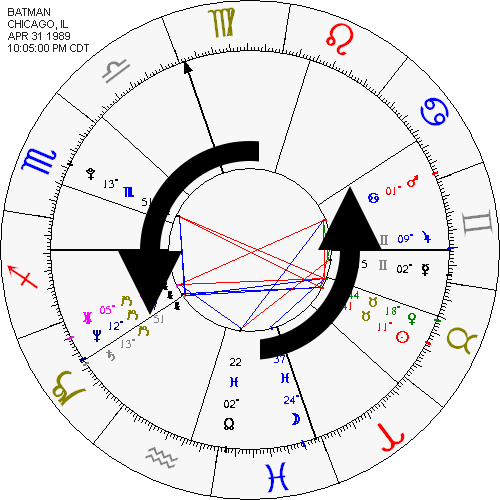
OVERALL PICTURE
The birth chart is made up of three things — planets, the signs of the Zodiac and the twelve Houses. Take a moment to find these on the wheel. The twelve segments or Houses have corresponding numbers in the middle of the circle.
Verify the accuracy of the birth data. This includes the name, the birth place, the birth date and the birth time. Here I used the name “Batman” and made up the birth information. In your own case, this step is extremely important.
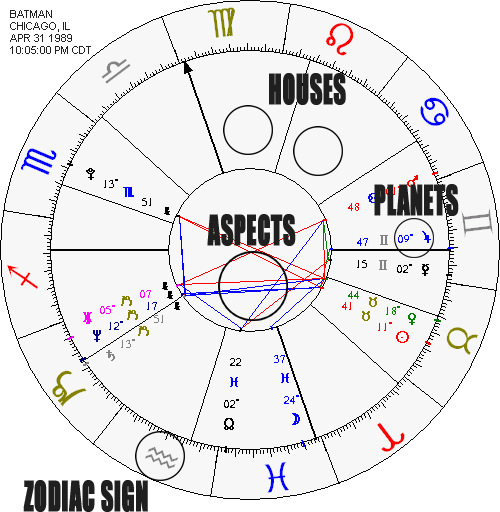
FOUR COMPONENTS OF CHART
Identify the Zodiac. You don’t need to know yet what all the components mean. The outer circle is actually made of two circles forming a band (or belt) called the zodiac. It is cut into the twelve signs of the zodiac.
Identify the Houses. Inside the zodiac there is what looks like twelve slices of pizza. They do not necessarily align with the signs of the zodiac. These are the twelve houses.
Find the ten Planets. Inside the twelve houses you find the ten planets. If you are counting more than ten in your Birth Chart that is because some websites (or programs or astrologers) show asteroid positions (and other interesting points in the sky) at the moment of your birth. Do not worry about these.
Recognize the Aspects. Finally, in the middle of the Birth Chart there are usually a whole lot of lines. They show interplanetary relationships and are called aspects.

Find the Horizon: Across the middle of the Birth Chart there is a line that represents the horizon. It goes from east to west, with east on the left of your chart. This is counterintuitive because on a map, the left side shows west. As we see in this example, this line is often not continuous but is interrupted by the aspects.
Find the Ascendant: As the earth rotates or “falls away” from the fixed stars and sky, it appears that the heavens rise up from the east because we believe we are on firm ground. This is very notable on a starlit night. The sign of the zodiac that is rising (ascending) over the eastern horizon at the moment of your birth is your rising sign or your Ascendant or ASC.
Find the DES, MC, and IC: The opposite point to the ascendant is called the Descendant or DES. Label it now. At the highest point of the chart we find the Midheaven. This is where the Sun was at the zenith (or in the south), the highest point in the sky, on your birthday. In Latin the word for Midheaven is Medium Coeli, hence the abbreviation MC. Label it now. The opposite point to the MC, the lowest point in the sky is called the Nadir, or the Immum Coeli or IC. In most charts, the cross created by connecting these four points is marked by thicker lines.

You already know where the Ascendant is. It is the point where the eastern horizon intersects the zodiac. If you look carefully you will see that this is actually within a sign of the zodiac, within a piece of the belt.
Compare the sign that the Ascendant intersects with the list of all the signs. In our example it is Sagittarius. The proper terminology is as follows: “Batman’s Ascendant is Sagittarius.”

Mark the First House: Now that we know the Ascendant we have also identified the starting point of the chart. The Ascendant is always the beginning of the First House. We count the houses counterclockwise.
Mark the other houses: Use ascending numerical order. Some charts have this already marked.
Note the house sizes: The houses in a chart are not necessarily all the same size but they can be. This depends on the house system used.

IDENTIFY PLANETS
Locate the Planets: Now we are ready to read the planets using the table in the center of our sample chart as a guide. In Batman’s chart I have circled Pluto, Moon and the Sun and Venus. In our case both Sun and Venus are in Taurus.
Planets in Signs: Just like the Ascendant is in a sign (in Sagittarius), so is each planet. Most easily we recognize the Sun, here it is in Taurus. This is Batman’s Sun Sign. Batman “is a Taurus” because his Sun was in the section of the zodiac that is Taurus when he was born. Batman also has Venus in Taurus and Pluto in Scorpio, as can be seen from his chart. Make a list of your ten planets and what sign they are in.
Add the Houses: The final step is to add the houses. You do this by adding a column to your list of planets in signs. Do this for your chart.
Glyphs & legends in your chart:
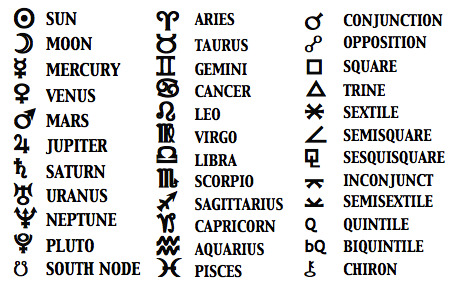
Planets in your chart:
Sun shows: How a person feels most fulfilled, and the areas of life that most contribute to self-knowledge and personal fulfillment.
Moon shows: What kinds of experience are most emotionally satisfying, and the areas of life that most contribute to emotional fulfillment.
Mercury shows: How learning occurs, subjects of interest, in what area of life communication skills are most important.
Venus shows: How relationships are formed, how love is defined, in what area of life most important relationships are formed.
Mars shows: How desires are pursued, how initiative is taken, in what area of life courage is developed.
Jupiter shows: How and where self-confidence and faith are needed and developed.
Saturn shows: Where integrity and self-reliance are essential, where fears and laziness must be overcome.
Uranus shows: How rebellious nature is expressed, where questioning of authority is healthy and essential.
Neptune shows: How spiritual insights unfold, where they are most likely to occur, and where disillusionment is experienced.
Pluto shows: How a sense of personal mission manifests, where the greatest potentials for transformative experiences and personal empowerment are found.
Houses in your chart:
First House (ARIES is the natural ruler): This is the field of experience in which you are challenged to develop your own unique identity and present it to the world. Traditionally this house is associated with personal appearance.
Second House (TAURUS is the natural ruler): This is the field of experience in which you are challenged to define and refine your personal sense of values. The things, talents, and qualities that you treasure, cherish, enjoy, and hold on to for security are here. Traditionally this house is associated with ; inner and outer talents and resources, personal values.
Third House (GEMINI is the natural ruler): This is the field of experience in which you are challenged to organize personal experiences to form your own unique picture of the world, and then communicate your perceptions to others. Traditionally this house is associated with; brothers and sisters; basic education; eye-hand coordination and manual dexterity.
Forth House (CANCER is the natural ruler): This is the field of experience in which you are challenged to develop your capacity for emotional closeness; to find a feeling of security ; and to face the effects your early childhood experiences had upon you. Traditionally this house is associated with; nurturing; inherited traits; unconditional love; the type of home you establish.
Fifth House (LEO is the natural ruler): This is the field of experience in which you are challenged to develop your creativity and self-esteem, and to find joy in living. Traditionally this house is associated with; children; enthusiasm; creativity; and motivation.
Sixth House (VIRGO is the natural ruler): This is the field of experience in which you are challenged to seek competence; to function efficiently, in your physical body and in your work. Traditionally this house is associated with ; work; health; services; habit patterns; food; diet; pets.
Seventh House (LIBRA is the natural ruler):This is the field of experience in which you are challenged to develop committed relationships with others. Traditionally this house is associated with; your attitudes toward spouses and partners; intimate relationships; friends; dealings with the public; what you look for in others.
Eight House (SCORPIO is the natural ruler): This is the field of experience in which you are challenged to boldly wrest all the powers of your psyche from the deep, dark underworld; focus all that power with ruthless intensity on the process of breaking down your reality structure into little pieces, then reassemble all the pieces into a new whole. Here is the place where all the taboos of society are addressed; where you dig into your own “internal garbage” to find the treasure hidden there. Think of a compost heap where all the bits of decaying food break down and eventually turn into fertilizer to nourish new growth. Traditionally this house is associated with; other peoples’s resources (possessions, money); sex; death and regeneration.
Ninth House (SAGITTARIUS is the natural ruler): This is the field of experience in which you are challenged to broaden your philosophical perspectives and to realize your highest potentials. Traditionally this house is associated with; the higher mind; higher education; law; in-laws; grand children.
Tenth House (CAPRICORN is the natural ruler): This is the field of experience in which you are challenged to earn respect and recognition in the world. Traditionally this house is associated with; ambition; status; reputation; career; the parent who set limits for you as a child.
Eleventh House (AQUARIUS is the natural ruler): This is the field of experience in which you are challenged to establish a relationship with group consciousness and contribute your gifts to community. Traditionally this house is associated with; humanitarian organizations; associations; friends; hopes, wishes and and ambitions; shared ideals.
Twelfth House (PISCES is the natural ruler): This is the field of experience in which you are challenged to explore your inner depths in solitude and silence; to discern between illumination and illusion, between spiritual growth and escapism. Before you can transcend the definitions of reality that confine you, you must be willing to let go of them. These definitions often have to become uncomfortable before we want to let go of them. Disillusionment and the experience of “bad luck” can create the desire to move through and beyond what is causing the pain. Traditionally this house is associated with; the unconscious; self undoing; sacrifice; karma; secrets; secret enemies; hospitals and institutions of confinement.
Birth Chart Interpretations: Now, as you know where the Batman’s planets are, you can now interpret his chart by yourself with the help of following links:
http://astrolibrary.org/interpretations/
http://www.cafeastrology.com/index.html
(The interpretations found there are “general interpretations”)
For free birth chart:
http://imtaurus.tumblr.com/birthchart (This blog is deactivated.)
http://alabe.com/freechart/
http://www.astro.com/cgi/chart.cgi
http://astro.cafeastrology.com/cgi-bin/astro/natal
http://www.uk-tarot-readings.co.uk/free-readings/astrology-chart.php
Addendum for new chart generator links, as of 2021:
https://horoscopes.astro-seek.com/birth-chart-horoscope-online
https://astro-charts.com/
(Credits Astrolabe, Laurence Hillman & Luisa Arevalo Klose)
Note: This is a fake chart. In this example we used April 31 which is a false date.
2K notes
·
View notes
Text
A Walk Through Your Natal Chart Houses
(Original poster: pressonnail) Reposted with permission for archival purposes; unchanged aside from spelling and grammatical corrections.
By far, one of the best analogies I have read in defining the ascendant and houses of your natal chart is what I call “The House” analogy. While I have read it in a few places over the years, the only one I can remember is in Kevin Burks book “Astrology: Understanding the Birth Chart,” therefore, I will credit it to him. I may actually reference his book A LOT because it is so well written. I think it is geared more towards intermediate level astrology and can be hard to understand for beginners but so many of his analogies and explanations couldn't be better.
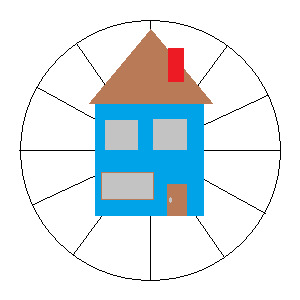
Every natal chart can be looked at like your home, and every house is a different room in that home. Just like we use the bathroom to pee, the kitchen to eat, and a bedroom to sleep, we use different houses in our natal chart to "store" different parts of ourselves and our life.
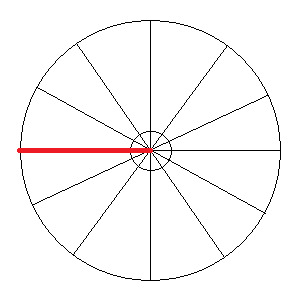
Every home has a doorway. In your Natal Chart, the Ascendant is your door. Just like the construction of every home starts with placing the doors and building the door frames, our ascendant is the first thing that should be determined in our birth chart. In similar analogies, I have heard the ascendant referred to as the “foundation” the home is built on, because our ascendant is the foundation of our natal chart that will ultimately decide which signs our houses belong to, and therefore which house and sign our planets end up in.
The front door is a better analogy because to get inside every house, you have to go through the front door; alternately, you also have to go through that door to leave your house. This is a lot like what the ascendant is in our natal charts; before people can get to know us, they get their first impression of us from our ascendant. Alternately, it’s also what we use to “look out the front door,” what our impressions of the outside world are, and how we let those impressions affect us.
So where people with a cheery sign in their ascendant (like Sagittarius or Gemini) might find the world an exciting place full of adventure and things to learn, a person with a Cancer rising would be more hesitant and paranoid of what the world has to offer.

Once through the front door of our ascendant, we enter the first house, or first “room” in our house. This room is the “The Me Room.” AKA, the "House of Self." This is the house the ascendant rules over and is directly tied to our personal individuality (not to be confused with the sun, which rules our "identity") & interests. It covers:
Mannerisms
Temperament & disposition
Physical characteristics
The way you present yourself to the world
The way other people see you
What you want in life & how you achieve it
What we expect from the world & how we handle what we get
Defense Mechanisms
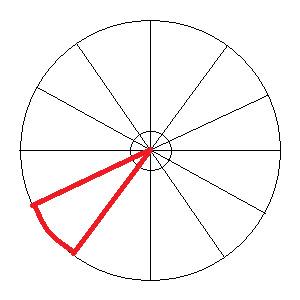
Once "The Me Room" as been established, the next thing we need is a room for all our stuff, which is what the second house is for, "The Room for my stuff" AKA "The House of Possessions." It's not just for stuff though, it's everything that you would consider "mine;" including your talents and skills and the ways that you use them to make money and get possessions. It covers:
Physical & Material possessions
How we make and spend money
What types of possessions we want
What types of possessions we value
Our senses & how we experience the physical world.
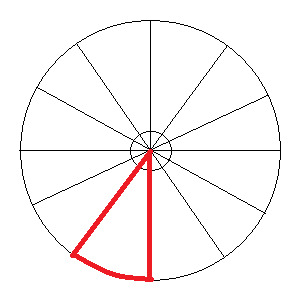
Once we have ourselves and all our stuff established in rooms, we need a way to room to go to that shows us how to use our environment & learn, express ourselves through speaking and writing, talk to people and travel around on a day to day basis, and interact with our families- particularly our siblings. This is what our third house or "Communication Room" AKA "House of Communication" is for; although it rules over a lot more than just how we communicate. It covers:
Day to Day travel
Early education
How we talk, speak, write, and express ourselves to others
Our relationships with siblings, aunts & uncles, cousins, & neighbors.
How we interact with our environment
In classical astrology, it was also the house of heresy.

The point illustrated above is one of the lesser discussed points in our natal chart. It's called the Imum Coeli (IC) and just like the ascendant is a "door" to outside of your house, but it's more of a secret door that only your closest friends and family can use, many others may not know it is there. It leads to the deepest and most protected parts of your life and who you are and represents our past, our connections to our family & heritage, and how it has affected us psychologically. It is said this is the point at which the soul enters the body and connects us to our past lives.
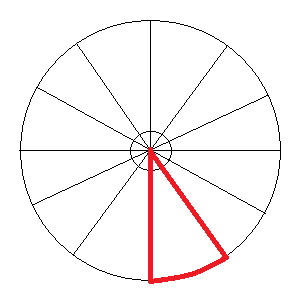
The fourth "room" in our "home" is the "Family Room," AKA "The House of Home." Once we have a room for ourselves, our stuff, and we know how to talk and experience others, we can establish a room to hang out with our family. That's what the fourth house is for, it covers:
Our personal time, either with our closest friends & family, or for time to ourselves.
Real Estate/Property, our homes
The type of home we grew up & the type of home we choose to make for ourselves.
Our heritage and memories
What you protect & shelter from the rest of the world
Our relationship with our parents (in modern astrology, it rules the mother, but in classical astrology it ruled the father)
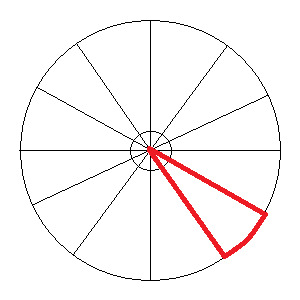
Now that we've established ourselves, our stuff, learned how to use our environment, and set up a place for our privacy, we want to have FUN! So we have to set up our fifth house, "the Party Room," AKA "House of creativity & fun." Sex is also ruled by this house- it's a common misconception that sex is ruled by the 8th house, however, we should all know that sex is meant to be fun and clearly belongs here. This is where we go to have fun with others, and the joy we get from it. Everything in this room makes us feel happy. It covers:
All forms of creativity & how we express our creativity
Children (and pets) & the happiness they bring you
Love affairs (not under the same roof, once you're married or living together, you go to the 7th house)
Speculation, Gambling, Games.
How we enjoy ourselves in life
Sometimes called the "House of Heart" because it rules how we feel and express love and affection.
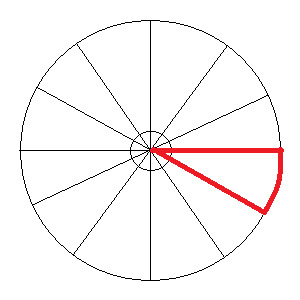
Alright, let's review: We have a room to define us, we have a room for all our stuff, we have a room to learn and communicate, we have a room to spend time alone or with our families, and we have a room to find fun and happiness- So, now, we need a place to nurse our hangover and get back to business. This room is "The Office" AKA the "House of Service and Health." It covers:
Day to day business dealings
Related to our job (not career)
Relations with our co-workers and bosses
How we choose to be helpful and others
Our health
Illness we may get or how to prevent illness

Another lesser known point on the natal chart is the Descendant, or "The back door" to our house. The descendant is opposite the ascendant- so where the ascendant acts as the door to which we view the world and the world views us; the Descendant relates only to how we interact in one-on-one relationships and what we look for in other people (no necessarily limited to romantically, but mostly on a romantic level).

Once we have established the bottom half of out chart, that has all our "Me" rooms and the things that relate to us on a physical plane (ourselves, stuff, environment, family, fun, work & health), we can start establishing the rooms we need for other people in our house, which is the top half our chart. The first one is "The Guest Room" or the "House of Partnership & Marriage," which is our 7th house. It covers:
Our significant others, spouses, and marriage (any relationship that is considered "contractual" or committed).
Contracts or legal situations we enter
Open enemies & adversaries (primarily in business/work)
In this room, we are always dealing with other people
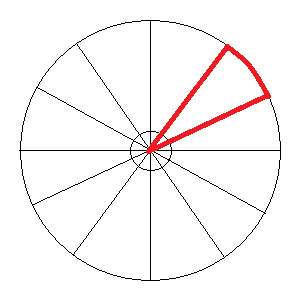
Now that we have established a guest room, we need a room to put all our guests stuff - and that's what the eighth room is for - we could call it "The room for my guests stuff" but it covers so much more than that for us as people as well, as it's the "House of death & rebirth" and is the most hidden house in our chart. It covers:
Everything that is "not mine;" other people's money and resources.
Inheritances and gain from marriages & partnerships
Taxes & debt
The security of our soul and emotions- and by extension, we keep our deepest fears and secret interests here.
Death, rebirth, & the afterlife- and by extension, the legacies we inherit from others as well as leave behind.
The dark arts, occult, and all things hidden or buried in the psyche- therefore by extension, psychology & psychotherapy is also ruled by this house.
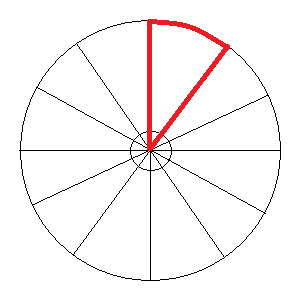
The ninth room, or "The room of research & exploration" AKA "The House of Mental Exploration & Long Distance Travel" is where we start to out-grow ourselves. We've already established the rooms we need for ourselves and our guests and now we need more growth and expansion in our lives. This is the room we go to when we want to discover things for personal growth, and discover new cultures & ideas. This house covers:
Higher Education
Long Distance Travel; not just to foreign places, but also of the mind.
Business affairs in other countries
People who expand your mind
Philosophy & studying profound topics
How we express our ideas publicly- and by extension, publishing & literature.
Organized religion & The Clergy

The final angle on your chart is "The Midheaven." It's the roof of your house, and when you stand on the roof, it's where the most people can see you. This governs over your public persona and how we are perceived in our career/professional lives as well as how we want to be seen professionally and what our ambitions and ideals might be. It's our crowning achievement for what we have done with our role in society.
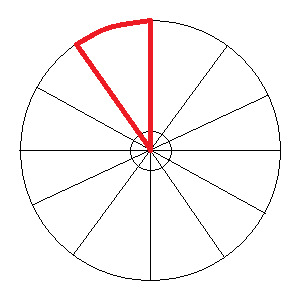
The next room in our house is "The Corporate Office" AKA "The House of Career & Public Standing." It sits opposite from our house of home, and rules over just that: everything that happens outside of our home and has a large influence on your material wealth. It covers:
Our life path/career
Public standing/community status & the reputation we have with others in a mostly professional sense.
Our ambitions, aspirations, power, position, and things we will achieve.
How we accept and deal with responsibility
How we use our talents to achieve success and the esteem of others.
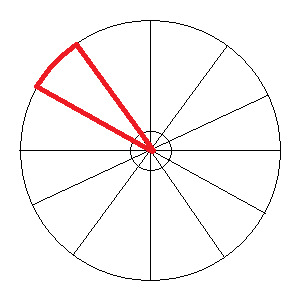
The 11th room is "The Clubhouse" AKA "The house of Friends & Hopes/Wishes." It stores everything that has to do with our friendships, as well as our long term hopes. It covers:
Social groups; how we interact with our social group/friends and our ability to enjoy other people.
How we interact and function with others in a group.
Political affiliations/groups, as well as clubs, societies, sororities/frats we belong to all belong to this house.
Long term hopes we have for ourselves, our wishes for the future.
Represents the capability of society to work together with each individual using their unique talents to work together in a group.

The last room of our natal chart house is the most mystical of all the houses, "The house of Secrets, Sorrow, & Undoing" or, you could call it "The Meditation Room," even though it evolves into much more than that. This is where we keep everything that doesn't exist on the physical plane, including our karma. Since it's at the end of the chart, we're usually the last to know what is in our twelfth house. it covers:
Our spiritual existence; our soul; what we do to maintain it
The fantasy world and escapism we use to take a break from reality
The unseen, psychic, and spiritual- our intuition and sense of things we are not consciously aware of
Hidden enemies
Our limitations, including our tendencies to sabotage ourselves & how/why we do.
Spiritual debt; this is where we pay and get rewarded for our deeds.
The meaning of life (as the last house, by the time we reach it, we have normally experienced our other houses to completion and will understand the meaning of our life as well as how the world is interconnected).
And that concludes the tour of our natal chart houses. I hope you all liked my lame Paint illustrations. =)
But one last note: A quote from Kevin Burks "Understanding the Birth Chart. A Classical Guide to interpretation."
The planets are like actors in a play. The sign that a planet is in represents that planets role, its costume, its motivation... The houses are the setting, the backdrop for the action.
#astrology#learn astrology#houses#astrological houses#zodiac#resource#reference#beginners#beginner's astrology
43 notes
·
View notes